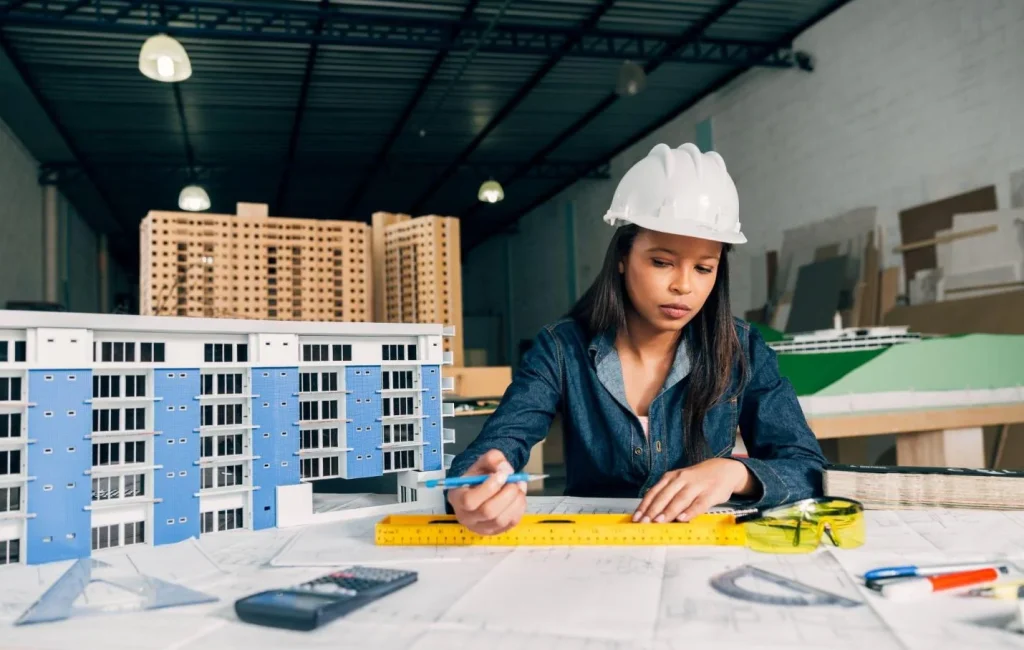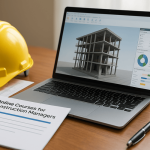When school districts face growing student populations, aging facilities, or funding tied to tight timelines for school construction, speed becomes a critical factor in delivering new or renovated school buildings. Yet rushing a complex construction project can lead to cost overruns, design flaws, and delays, unless the right project delivery method is used.
That’s where design-build construction stands out.
This innovative approach streamlines the construction process, allowing educational institutions to meet demanding schedules without compromising quality, compliance, or long-term value. Here’s why the design-build method is ideal for fast-track school construction projects, and how it’s transforming outcomes for K-12 districts across the country.
What Is the Design-Build Delivery Method?
At its core, design-build construction consolidates design and construction under one contract. Instead of hiring a separate architect and general contractor, the school district signs a single design-build contract with a design-build contractor, who oversees every phase of the project.
This integrated approach contrasts with traditional construction project delivery methods like design-bid-build, where design and construction are handled in sequence, and often in silos. In design-build, both happen concurrently, enabling faster decision-making, fewer miscommunications, and real-time value engineering.
To better understand how this delivery method evolved and gained traction, check out The History of Design-Build.
Why Speed Matters in School Construction
Timelines are non-negotiable in school construction. Projects often revolve around fixed academic calendars, bond funding cycles, and community expectations. Delays can result in students and teachers working in temporary facilities or overcrowded classrooms, not to mention budget impacts from inflation and lost instructional time.
Here are a few scenarios where speed is vital:
- Enrollment Growth: Districts experiencing rapid population growth must expand capacity quickly.
- Natural Disasters or Emergencies: When facilities are damaged, a fast response is critical.
- Bond or Grant Funding: Many school construction projects are tied to funding that expires within a certain time frame.
- Energy and Infrastructure Upgrades: Schools seeking to modernize HVAC, lighting, or renewable energy systems need efficient implementation during breaks.
The design-build process is uniquely suited to meet these needs.
Continue your journey: This related article is worth your time.
How Design-Build Enables Fast-Track School Construction
1. Overlapping Design and Construction Phases
In traditional models, construction cannot begin until design is 100% complete. This linear sequence consumes valuable time. With design-build contracting, construction can begin while design is still underway, an approach known as “fast-tracking.”
This overlapping of phases significantly accelerates the overall timeline. Site work can start while building systems are still being finalized, and long-lead materials can be ordered earlier.
2. Fewer Delays from Change Orders
Because the design and construction services are integrated, constructability and budget reviews occur throughout the design phase. The team works together to identify and resolve potential issues before they impact the schedule. This dramatically reduces the risk of change orders that delay the project.
In fact, 10 Reasons Why the Design-Build Delivery Method Works highlights how public sector clients, including school districts, see fewer change orders and greater budget control through the design-build model.
3. One Point of Contact Streamlines Communication
A major source of delay in school construction projects is the communication gap between architects, engineers, contractors, and owners. With design-build, the school district communicates with a single design-build contractor who manages the entire process.
This eliminates finger-pointing and ensures faster resolution of issues, questions, or decisions. When time is tight, reducing administrative complexity is a powerful advantage.
Advantages for School Districts
Improved Budget Control
In design-build, cost estimation starts early and continues throughout design development. This allows schools to make informed decisions and avoid surprises. Real-time pricing and value engineering ensure that the final design aligns with available funding.
Faster Occupancy
Whether building a new school or renovating existing facilities, the goal is to get students and staff into safe, high-performing spaces as quickly as possible. The accelerated timelines of design-build make this more achievable, often months faster than other project delivery methods.
Higher Quality Outcomes
Despite the speed of delivery, quality does not suffer. On the contrary, the collaborative nature of the design-build process often results in smarter design decisions, better construction coordination, and higher-performing buildings.
The Role of the Design-Build Contractor
Choosing the right design-build contractor is essential for success. In fast-track school construction, you need a partner with:
- Deep experience in the education sector
- In-house design, engineering, and construction teams
- A proven track record of meeting tight deadlines
- Strong relationships with subcontractors and suppliers
- A collaborative, transparent communication style
Because the contractor plays such a central role in both design and delivery, districts should evaluate qualifications, not just price, during the selection process.
Design-Build in Action: Real-World Applications
Here are a few examples of how the design-build method has been successfully applied to fast-track school construction:
New School Builds
When building from the ground up, design-build can deliver new campuses faster than traditional methods. Early site development, modular building strategies, and phased construction allow districts to meet enrollment deadlines without sacrificing design intent.
Renovations and Additions
Summer renovations often require tight scheduling. The integrated planning and early coordination in design-build ensure that classrooms are ready when students return.
Energy Efficiency Upgrades
Design-build is also effective for infrastructure and sustainability improvements. Whether replacing HVAC systems, adding solar panels, or modernizing lighting, schools benefit from a coordinated approach that minimizes disruption.
Compliance and Transparency in Public School Projects
Some districts initially hesitate to use design-build due to misconceptions about public procurement and transparency. However, many states now recognize design-build as a compliant, cost-effective solution for school construction.
Modern procurement laws allow districts to issue RFPs that evaluate design and construction services holistically, considering experience, technical approach, and team qualifications. In this way, design-build aligns with both the letter and spirit of public accountability.
Minimizing Disruption to Learning
One overlooked benefit of the design-build process is how it minimizes disruption to ongoing school operations. Because planning, scheduling, and construction are integrated, the team can:
- Plan construction during off-peak times (summer, holidays)
- Separate construction zones from learning spaces
- Coordinate timelines around testing schedules
- Ensure safety, noise, and cleanliness standards are upheld
This is particularly important for additions and renovations where the school is still in session. A single team managing all aspects of the project ensures a safer, more efficient experience for students and staff.
How Design-Build Supports the Future of K-12 Education
Beyond just speed, the design-build contracting model supports forward-thinking educational design. With early involvement from all stakeholders, educators, designers, and builders, schools can be designed for:
- Flexibility and adaptability
- Collaborative learning environments
- Technology integration
- Energy efficiency and sustainability
- Long-term durability and maintenance savings
In a world where the demands on schools are constantly evolving, building projects need to be both fast and future-ready. The design-build model helps make that possible.
Conclusion
K-12 leaders are under immense pressure to deliver safe, modern, and inspiring learning environments, quickly and cost-effectively. Traditional construction approaches often fall short when timelines are tight and collaboration is essential.
That’s why design-build construction has emerged as the ideal solution for fast-track school construction projects. Its integrated approach reduces delays, streamlines communication, and accelerates delivery, without compromising quality, compliance, or stakeholder trust.
Want more insights like this? Head over to 2A Magazine and start exploring.







